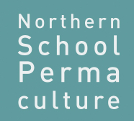The Northern School of Permaculture
You are here
Design directives
Please design your systems so that you:
Use the principle of relative location (get things in the best possible place). In particular:
● decide what yields are required from the system you are designing
decide how those yields will be provided.
● list the functions that are required to meet those yields (I.e. what the system will
do)
Review the events (both planned and unplanned) that take place within the system and also the risks external to the system
● list the functions that are required to deal with those risks (again, how the system will function)
Now identify the elements (the components, the things) that will provide the yields and deal with the risks
Decide how the elements of the design will be arranged
● consider each element in terms of its inputs and outputs (needs and products)
● place elements to maximise the beneficial relationships between them
● place elements to minimise the expenditure of energy within the system
● place elements to maximise the energy available within the system
[energy efficiency, location, beneficial relationship, “living within limits]
Make sure that
● a single element carries out many functions
● a single function is served by many elements
The more important the function, the more we apply this.
[robustness, “redundancy”]
In carrying out the above work, you should keep the following in mind, and monitor how
you use them:
● apply patterns observed in nature to a specific situation so that you increase the
yield
“Nature” includes human activity that integrates with the rest of nature – as well as forest
gardens, nutrient cycling and use of water in the landscape, consider the layout of
buildings, social spaces and human interaction
[pattern, relative placement, beneficial relationship, yield]
● show preference for biological resources and re-vegetation of the planet.
[energy cycling, “living within limits”]
● encourage diversity to stimulate polycultures and use niches in space and time
[beneficial relationship, robustness]
● use stacking in space and time to increase yields
[relative location, yield]
● maximise edge to increase opportunities for diversity and connections
[diversity, beneficial relationship, yield]
● show that you understand natural succession and evolution, and accelerate that
where possible
[pattern, robustness]
● use guilds as patterns for increasing stability and mutual support
[pattern, beneficial relationship, robustness, yield]
● cycle nutrients and information as locally as possible within the system
- use (nearly) all products and meet (nearly) all needs within the system itself
- ensure that any outputs of the system become the inputs of another system
[relative location, energy cycling, “living within limits”]
The above are "principles" that you apply to give you direction with your design work. You
can also observe apply and describe other, more general, principles.
- Mollison's “permaculture “attitude”
- Holmgren's 12 principles
- and others too numerous to mention....
Theme by Danetsoft and Danang Probo Sayekti inspired by Maksimer
